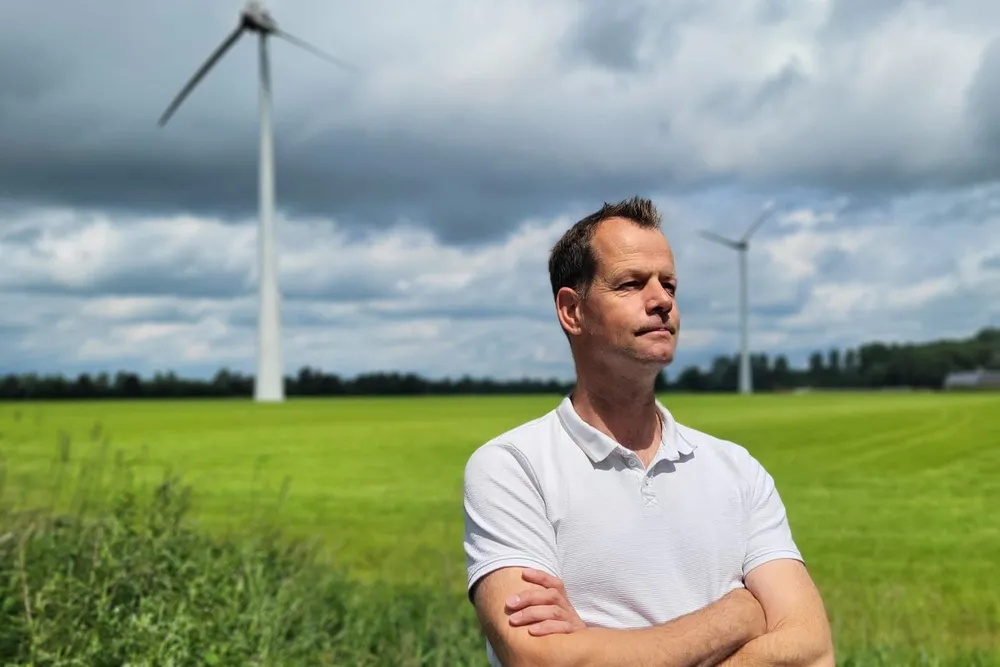We must end North Sea offshore wind free-for-all or suffer the consequences
Chaotic developer rush for prime North Sea real estate will only result in wake loss disputes and difficulties sending power where it is needed – but it doesn’t have to be that way, argues Erik Holtslag

Imagine a chessboard where every player, instead of coordinating, is frantically grabbing the best squares for themselves, ignoring the long-term implications for the game as a whole. Now, replace the chessboard with the vast expanse of the North Sea, and the players with nations and wind farm developers.
This, in essence, is the chaotic reality unfolding before our eyes as the race to build offshore wind farms accelerates. Pushing to deploy turbines is great but the current uncoordinated ‘power grab’ is setting us up for significant future headaches, rather than a seamless energy transition.
Offshore wind developers naturally all vie for the most profitable locations and this might seem like healthy competition. But, dig a little deeper, and a troubling picture emerges: a distinct lack of coordination between countries and even between individual developers.
This isn't just about maximising immediate profits; it's about the very real risk of creating a patchwork of isolated, potentially conflicting projects, damaging their prospects in future tender rounds if not properly addressed.
Consider the ripple effects. What happens when a UK-based offshore wind farm is built right next to a Dutch project? What impact could wind wakes they will both generate have on each other? Who is liable for damages due to loss of income if one project negatively affects another?
We're already witnessing legal battles over such issues, and with the increasing size and financial stakes of these wind farms, our expectation is that these disputes will only escalate.
And then there's the colossal challenge of getting all that clean energy to where it's needed.
Building large-scale interconnectors is time-consuming and incredibly expensive. Existing grid infrastructure, particularly between the UK and mainland Europe, is already reaching its limits.
The alternative, Power2X solutions (converting electricity into hydrogen or ammonia), face similar hurdles in terms of cost and deployment time.
Are we truly prepared to build a tangled web of expensive superhighways for electricity, only to find ourselves with huge overproduction at certain times and places, and bottlenecks elsewhere?
Fast forward to 2050. Imagine a future where, in some economic zones like the Netherlands, up to a third of the North Sea is dotted with wind farms. Picture a scenario where a low-pressure area over the UK & Ireland generates a massive surplus of electricity, while other regions are experiencing a deficit.
The current approach would dictate building even more expensive infrastructure – whether electrical cables or pipelines for hydrogen/ammonia – to literally ship all ‘excess’ energy across the continent.
But what if there was a radically different, more elegant solution? What if we dared to dream of an ‘idealised’ scenario: treating all offshore wind farms in Northwest Europe as a single, vast power plant?
Imagine the wind itself becoming the carrier of energy, allowing us to ‘harvest’ it precisely where and when it's needed.
Instead of letting every individual wind farm operate at maximum capacity regardless of demand, we could treat this immense collective capacity as a managed, dynamic resource.
This means intelligently curtailing output in one area during periods of oversupply and ramping it up elsewhere when demand peaks.
This shift in perspective, while seemingly radical, offers immense benefits. Naturally, it would necessitate a complete rethinking of national policies, subsidy schemes, and interconnector designs.
But the upsides are compelling. Wind farms would enjoy longer lifespans due to less time spent at full power. We would see reduced costs for expensive transport and conversion technologies. Crucially, the output would become more forecastable and predictable.
Given that the wind farms currently being built and planned will still be in operation by 2050, the time for this fundamental rethink is now. We have a unique window of opportunity to design a Europe-wide offshore energy system that is truly integrated, efficient, and resilient, preparing for the operational conditions we desire in 25 years.
The alternative is a future of escalating costs, legal disputes, and inefficient energy transportation. The choice is ours: a chaotic scramble or a unified, intelligent energy future for Europe.
(Copyright)